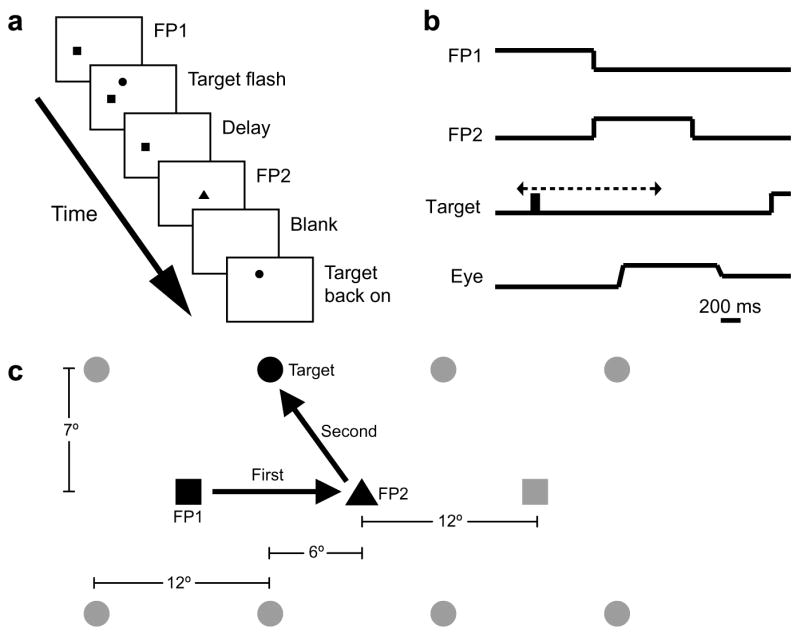Fig. 1.

Behavioral task. (a) Double-step task. The trial began when the monkey looked at an eccentrically-located initial fixation point, FP1. At a random time between 950 ms and 1550 ms after the monkey began to fixate it, FP1 disappeared and an identical second fixation point, FP2, appeared in the center of the screen. This was the monkey’s cue to make the first saccade. At some time (varied randomly from trial to trial) between 300 ms before the disappearance of FP1 (shown in b) and 700 ms after it, the target stimulus was flashed on-screen for approximately 100 ms. The monkey continued to fixate FP2 for 1000 ms, at which point it disappeared. He then made a saccade to the remembered location of the target flash. If his saccade fell within the appropriate window and he remained there for 100 ms, the target was turned back on, and he received a liquid reward. For Monkey R, FP2 disappeared as soon as the target had flashed and the monkey had completed the first saccade. (c) Configuration of stimuli for Monkeys S and W. FP1 (illustrated by the squares) appeared at ±12° horizontally and 0° vertically. FP2 (illustrated by the triangle) always appeared at the center of the screen. The target was flashed at −18°, −6°, +6°, or +18° horizontally and ±7° vertically. For Monkey R, FP1 was presented at ±20° horizontally and 0° vertically, FP2 was at the center of the screen, and the target was flashed at ±10° horizontally and +10° vertically. The specific configuration of stimuli on any given trial was chosen pseudorandomly at the beginning of that trial.
